Changes Through Time
Archaeological remains from Peru indicate that the behavior of El Niño has changed over the past 10,000 years. IQCS researchers have shown that this climate oscillation started 5,800 years ago after a long break and became more frequent at about 3,000 years ago.
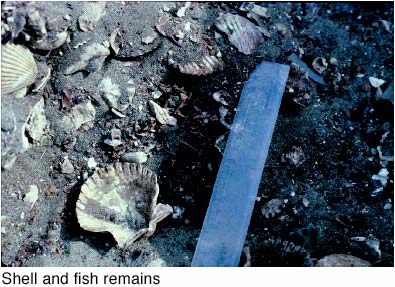
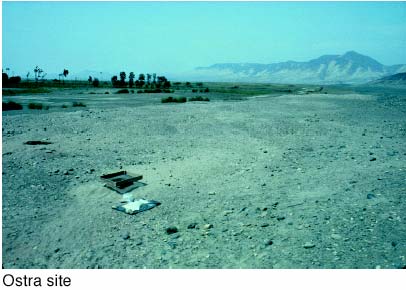
5,800 Years Ago: El Niño Onset
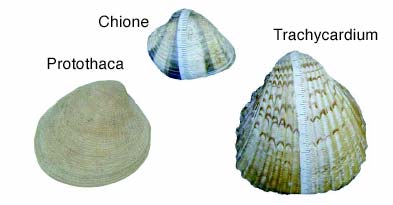
Since people first colonized the coast of Peru over 13,000 years ago, they have taken advantage of its rich marine resources. As a result, the remains of fish and mollusks are common in coastal sites. These shells and bones tell stories about the marine climate over this long span of time. In all known sites dating before 5,800 years ago and located in the northern part of Peru, the mollusks and many of the fish are species that only survive as populations in water that is warmer than that of today. After 5,800 years ago, these species disappear from the archaeological record and are replaced by organisms adapted to cooler temperatures. The discovery and analysis of these remains by IQCS researchers and their colleagues led to the recognition that the marine climate was very different before 5,800 years ago--different in ways that imply that El Niño was absent or radically changed from what the modern world experiences approximately every 3 to 7 years.
3,000 Years Ago: More Frequent Niños
For almost 3,000 years after the onset of El Niño, this climate phenomenon recurred infrequently, perhaps only once or twice a century. During this time, people on the coast of Peru began living in large villages and building monumental temples. They continued to eat seafood, including many clams and mussels of species that are adapted to cool water and cannot survive the warm temperatures typical of El Niño. The presence of these organisms in northern Peru indicates that El Niño could not have recurred frequently during this time. Then, about 3,000 years ago, something changed: the warm-intolerant species disappeared and were replaced by others that recover quickly from El Niño warming. At the same time, the early monumental temple cult collapsed and coast-dwellers did not build large public structures for hundreds of years.
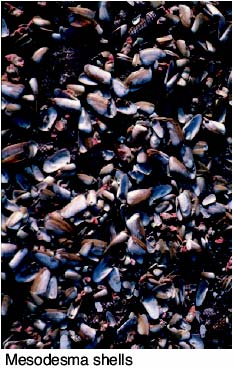
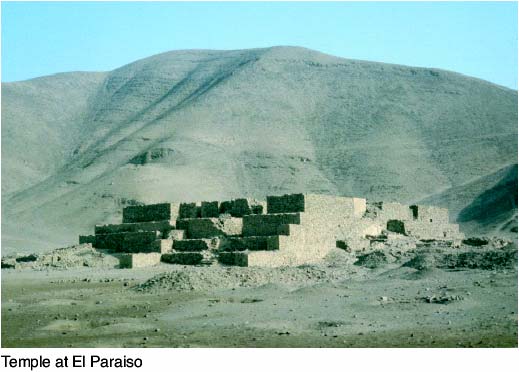
Selected References:
Sandweiss, D.H., H.B. Rollins, and J.B. Richardson III, 1983, Landscape Alteration and Prehistoric Human Occupation on the North Coast of Peru. Annals of Carnegie Museum, 52, 277-298.
Rollins, H.B., J.B. Richardson III and D.H. Sandweiss, 1986, The Birth of El Niño: Geoarchaeological Evidence and Implications, Geoarchaeology, 1, 3-15.
Sandweiss, D.H., J.B. Richardson III, E.J. Reitz, H.B. Rollins, and K.A. Maasch, 1996, Geoarchaeological Evidence from Peru for a 5000 Years B.P. Onset of El Niño, Science, 273, 1531-1533.
Sandweiss, D.H., J.B. Richardson III, E.J. Reitz, H.B. Rollins, and K.A. Maasch, 1997, Determining the Beginning of El Niño: Response [to comments], Science, 276, 966-967.
Sandweiss, D.H., K.A. Maasch, and D.G. Anderson, 1999, Climate and Culture: Transitions in the Mid-Holocene, Science, 283, 499-500.
Sandweiss, D.H., K.A. Maasch, R.L. Burger, J.B. Richardson III, H.B. Rollins, and A. Clement, 2001, Variation in Holocene El Niño frequencies: Climate records and cultural consequences in ancient Peru, Geology, 29(7), 603-606.

